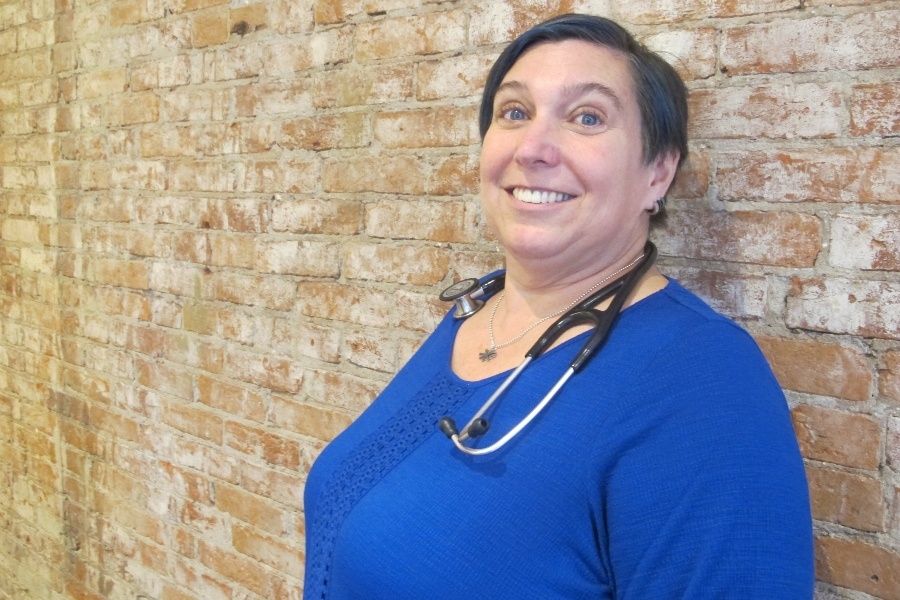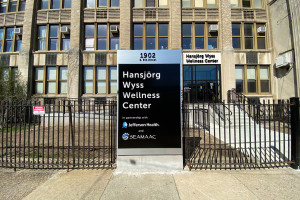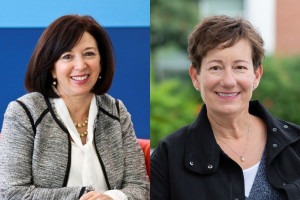This Alternative Healthcare Plan Is Replacing Traditional Insurance Models
Direct Primary Care is an affordable payment model for healthcare services that could help improve health outcomes in underserved communities.

Dr. Vicky Borgia is a board-certified family medicine physician with special interest and training in reproductive, LGBTQ+ and integrative health. / Courtesy
Choosing a healthcare provider can be an incredibly daunting undertaking. There are hundreds of plans to choose from, each with their own deductibles, copays, complex referral systems and provider networks — and that’s if you can afford the health insurance premiums. Those without insurance often face few or subpar options for care that are even more difficult to navigate.
Direct Primary Care (DPC) is an alternative payment model for healthcare services that eliminates the middleman (insurance companies), often saving time and money for both the patient and the doctor. DPC plans allow patients to subscribe to their primary care provider much like they would subscribe to a service like Netflix or Hulu.
For $20 a month, patients with DPC plans can gain unlimited access to their provider as well as reduced costs for lab tests and prescriptions. Alternative healthcare payment plans like DPC have been around for decades but have recently become more popular due to the rising cost of traditional health insurance plans and worsening health outcomes in underserved communities. Today, more than 1,100 healthcare providers across the United States offer DPC plans in their practices.
In October, Dr. Vicky Borgia opened Radiance Medical Group in South Philadelphia. It is one of 30 DPC centers in Pennsylvania and one of only four such centers in Philadelphia. NextHealth PHL spoke to Borgia about why she chose the DPC model for her center and why she thinks it will be an important option for patients now and in the future.
NextHealth PHL: Why did you decide to use direct primary care as the payment model for your medical group?
Borgia: I have been a physician for over 20 years. I’ve worked in tons of different models, mostly with disenfranchised people. I’ve done a lot of work in federally qualified health centers (FQHCs); I’ve worked in a residency; I’ve worked in an academic medical center, and I’ve always felt like none of those models really served patients or providers. People get rushed in and out. You’re seeing them in an assembly line. You’re seeing people with complex issues in like ten minutes, and you never feel like you’re doing people justice. You often don’t feel like you’re practicing what you’re trained to do. I needed to step out of that model.
About a decade ago, I read an article in the AARP journal about a group in California that had a model that had 50 percent of people pay a monthly fee and 50 percent receive free or discounted care. It was a model that would have the community help pay for care for people who couldn’t afford it. That was always appealing to me, the idea that the community takes care of each other.
We’re at a critical junction in our country now when we have to show that we care for each other as a community. Besides wanting to get out of this industrial, assembly-line style of medicine, I also thought this was the right time because as Obamacare regulations get weaker and as people opt to have no coverage, we’ll be able to provide an alternative that people can afford.
How does direct primary care plan work compared to a traditional insurance plan?
In the traditional model, let’s say you have insurance through your job. You have a plan that you pay into, and you are assigned a doctor or you get to choose one. You go to your doctor’s location, and the insurance company can dictate what medicines you can take, which tests can be done, and they can micromanage what you and your doctor decide is the best course for you, your life, your family and your health. That’s if you have insurance.
If you don’t have insurance, which lots of people don’t, you go to a federally qualified health center or a teaching health center. You usually wait for hours and see someone who’s maybe being trained on the job. You see them for eight to ten minutes, and hopefully you get what you need but sometimes you get what you get.
When you come to our practice, you sign up as our patient, pay a monthly fee, and have access to us 24/7. You can come in and see us for anywhere from 60 to 90 minutes and we can talk about everything you need.
Who is the ideal person to use a DPC plan?
Someone who has the means might have traditional insurance and add a DPC plan for convenience and access. For example, today, I’m going to see one of my families at their house. They’re a family that has traditional insurance through their job but because they have a plan, I can go to their house, see all four of them for all of their chronic and acute issues, and then they can text me, do video conferencing with me, or they can come to the office whenever they need. Those are things you can’t get with a traditional plan.
But what I hope will be the core of my practice are people who feel like they don’t belong at other places. LGBTQ people who might not feel at home or might not be able to deal with the bureaucracy at the queer centers that we have. Immigrants who might have to wait all day to be seen at an FQHC. People with chronic illnesses who haven’t been seen because they don’t have the time or the insurance so they wait until things get too far. We want to be there for them, and see them on a regular basis so that they can get healthy.
At our place, the lowest plan is $20 for a kid with an adult who also joins, and then we scale up based on age. A college kid can pay $50 a month, and we have plans for families. We’re also planning to work out plans for small businesses. So, if you sign up everyone at your job, we’d give you a discounted rate. This could be great for restaurants, small businesses, and places where people otherwise wouldn’t have any healthcare options.
What are some of the downsides to DPC plans?
The downside to this is that people really should have insurance for catastrophic things. This is only primary care. We don’t manage those catastrophic things. We don’t do specialized testing or major surgeries, so you’d still need a traditional plan for those things. We take care of your chronic illnesses and your everyday urgent care needs.
Why is DPC such an important option for this region and for this particular time in our country?
For our region, the rumor is that it’s a tough market to crack with DPC, but I don’t believe that’s true. There’s definitely a need here. When you think about the loss of Hahnemann, and even with safety-net hospitals, there are a lot of holes in the system and people can get lost in the bureaucracy of it all. If you get lost trying to navigate a system that can be incredibly confusing and you don’t have someone who can advocate for you, it can be tough.
It’s a very dangerous time for our country with the erosion of rights in general — civil rights and medical rights. Healthcare is something that everyone should have. It’s something we should provide as a country.
DPC is important on a practical level because people are not getting insurance and people are not seeking care because they’re afraid to present to certain places. I know this was ruled against, but the idea that you can’t try to get medical assistance if you want to immigrate to this country has many people afraid. Fear is going to make so many people avoid care for health problems until they’re very far along and very costly to us as a country. So, if you have a place where you can feel safe, where you know you can go and receive care that’s compassionate from a person with humility, that will save everyone time and money.


